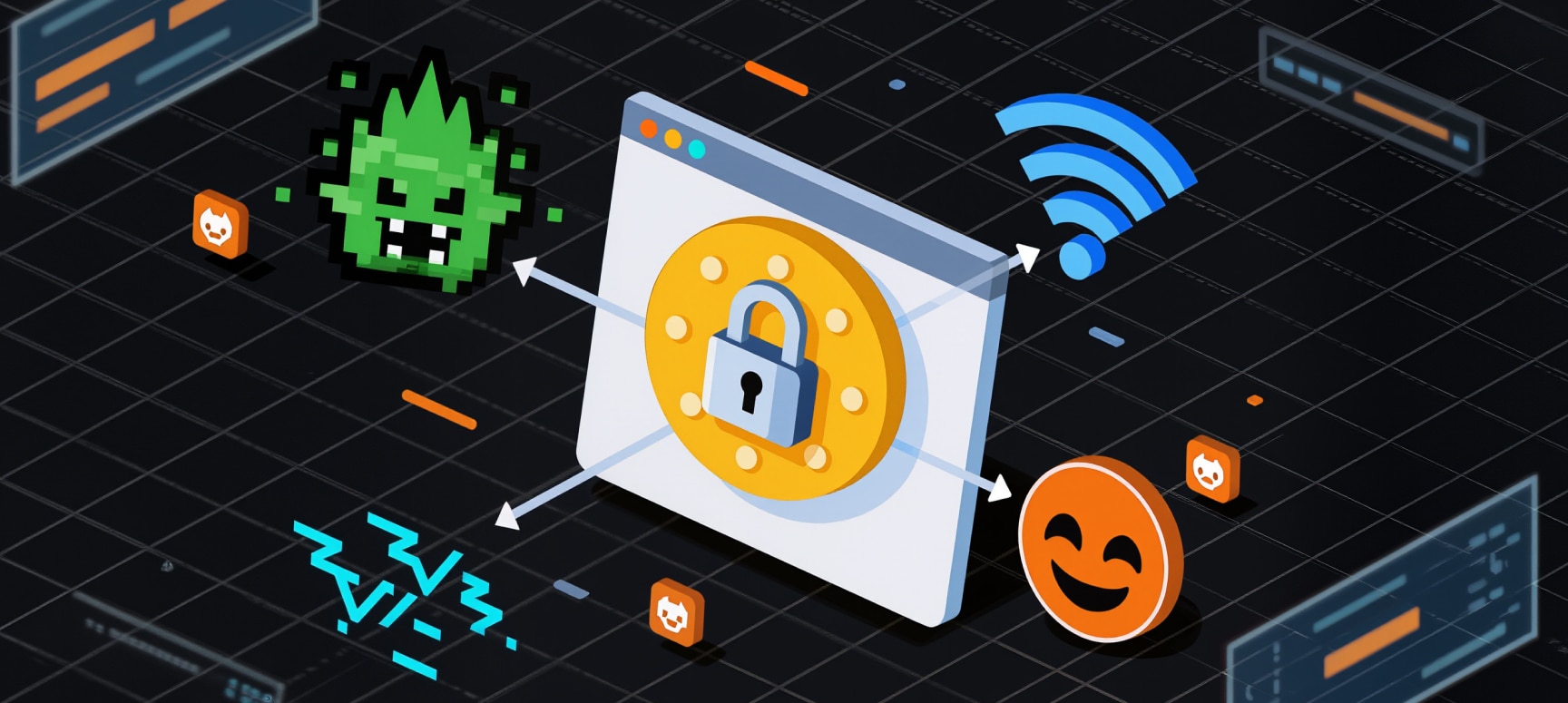How to Automate Supply Chain Risk Reports: A Guide for Developers
Do you use Python? If so, this guide will help you automate supply chain risk reports using AI Chat GPT and our News API.

Session hijacking is a cyberattack method where malicious actors steal or access session tokens, the link between two or more communication devices, to impersonate legitimate actors. Once the threat actor has successfully accessed a session, they gain access to valuable systems or data, including financial or health information. Additionally, they can execute other malicious actions, like sending phishing emails or encrypting data.
In a session hijacking attempt, hackers will first try to gain access to session cookies. These cookies are critical to verifying a legitimate user’s identity. Once a cookie is stolen or intercepted, the network may not realize a bad actor is in the system; it will generally treat the actor like a legitimate user unless notified. There are four main strategies for hijacking a session: session fixation, session side jacking, cross-site scripting, and malware.
Session hijacking is a complex process, but there are four strategies attackers may use to access a system.
In this method, an attacker sets a session ID, a unique string of code stored on the web server, and then gives that information to an unknowing user in the form of a link. The session ID is what allows the web server to remember information as a user accesses different pages. For instance, a user will have a single session ID as they shop online. The attacker will then be able to access the user’s credit card details once the purchase is complete. Since the attacker knows the session ID, all they have to do is wait for the user to access the website through that link. This is often done using a fraudulent email encouraging an individual to log into a familiar page by following the attacker’s link.
Here, attackers analyze network traffic to steal a session cookie. This is more common if a website is not encrypted beyond the login page. While most websites will encrypt the password once a user has signed in, the session cookies, alongside other user actions, can be read if a WiFi network is unsecured. Attackers use a method called session sniffing, which involves a computer program that can analyze computer traffic. By reading the traffic, the attacker is functionally in between the two legitimate actors. For example, if someone is accessing sensitive information using an unsecure network in a coffee shop, this information could theoretically be viewed by a malicious actor also on the network.
Under this method, an attacker tricks either a computer or a website into running malicious code. The code, created by the hacker, will appear to be trustworthy because it looks as if it belongs to the server. Since the code was created by the hacker, they can copy the cookie or perform other operations. For instance, a malicious actor may take advantage of a website’s vulnerabilities, access the website, and then place malicious code that lures users to click on it.
In this last, more commonly known method, attackers may attempt to hijack an individual’s browser to access files and execute specific actions, including installing malicious applications. Here, the cybercriminal can access a network’s files or digitally access the server. For example, a bad actor may intercept a website and then download programs onto a user’s computer once the user accesses the website.
Unfortunately, cybercriminals are growing increasingly sophisticated, and session hijacking remains a common tactic to access information. According to a report from The University of Bedfordshire, man-in-the-middle attacks are both some of the most common and most effective attack strategies to date. They are also frequently part of session hijacking attempts.
According to other recent reports, when malicious actors hijack a session, they may even be able to bypass some of the most robust security settings, like multifactor authentication (MFA). The threat has been large enough that the White House issued an executive order in 2025, which provided new guidelines for securing session tokens. Other government organizations, like New Jersey’s Cybersecurity & Communications Integration Cell, have issued specific advisories warning organizations of session hijacking.
Outside of stealing valuable data, these breaches can be costly, with IBM estimating that a compromised session can cost an average of $4.45 million to resolve. This cost includes breaches against critical cloud applications or when large amounts of data are stolen, which are typically more costly than smaller breaches.
Risks are expanding, especially with the increase in remote work and the adoption of cloud services. It’s common for employees to access sensitive data outside of their work network, using the cloud. A 2024 Cloud Security Alliance report found that 74% of session hijacking attacks took place in the cloud.
With rising risks and growing costs, it’s imperative that companies and security teams seriously consider how they can prevent these hijacking attempts.
Despite the concerning data, preventing session hijacking is certainly possible. There are several practical measures used to prevent these attacks.
First, HTTPS enforcement is a common preventive measure. When a website enforces HTTPS, all web traffic is encrypted with the standard Transport Layer Security (TLS) measures. HTTPS prevents attackers from sniffing on unsecure networks, stopping session sidejacking and other man-in-the-middle attacks before they take place.
Next, limiting a token’s lifespan can prevent hackers from accessing the session. The tokens, which are used to link communication devices together, can have an expiration date. If tokens expire more regularly, it limits the time a hacker has to try to access the session. Many organizations already use this, which is why individuals may be automatically logged out of websites that handle protected information after a certain period of inactivity.
Another strategy is requiring IP-based validation, which means that the network frequently checks to make sure a user’s IP address hasn’t been changed. If the IP address changes, the user must re-authenticate themselves. This strategy blocks criminals from hijacking a session from a different location. However, it’s not foolproof, as hackers may be using the same IP address, or the attack may originate on the website itself, as in cross-site scripting.
Multi-factor authentication (MFA) is a best practice for all organizations because it forces users to log in with information beyond their password. For example, it’s common for individuals to get a code texted to them that a malicious actor would not be able to access. While this is a good strategy, MFA can be bypassed by hijacking the session after the user has gone through the authentication process.
Web application firewalls (WAF) may be able to detect and prevent suspicious activity. These firewalls constantly monitor web traffic for suspicious patterns and track session tokens. Applications can also help enforce security policies like re-authentication.
Monitoring the dark web is an excellent strategy to prevent session hijacking and mitigate the fallout in the event of a successful attack. In particular, when organizations monitor the dark web, they can pay attention to malicious marketplaces that may be selling stolen session cookies or credentials. Stolen cookies or session tokens are generally found on the dark web, but organizations need to know if their information is posted online.
Dark web intelligence solutions, like Webz.io, can quickly alert organizations about threats and end any compromised sessions. The early warning is a critical prevention strategy that could become the most important factor if other methods fail.
Webz.io is the leader in dark and open web intelligence, helping SOC analysts provide quicker response times and preventative strategies. This includes detecting credential theft, cookie manipulation, and dark web credential trading. Lunar can also quickly monitor, identify, and alert users to security threats before they have a chance to lead to a breach.
Ready to stop session hijacking once and for all? Talk to a Webz.io expert today.
Credential theft is when usernames and passwords are stolen. Session hijacking involves stealing a user’s session token to gain access to an account, system, or data. Session hijacking can be done without stolen credentials. Conversely, stolen credentials may not necessarily lead to or be related to a hijacked session.
Organizations can monitor IP locations and network traffic for suspicious activities. SOC teams can also use a dark and open web intelligence platform to be notified if session cookies have been stolen.
Cookies are small text files temporarily stored in the browser, which contain information about the website’s session. Session hacking involves a bad actor stealing these cookies for malicious purposes.
Dark web monitoring can help vendors learn if any sessions are compromised or if any information is for sale. With this insight, organizations can respond by ending the session, preventing a breach from occurring.
MFA is generally a good practice, but it is not a foolproof solution. Hackers frequently bypass MFA by stealing session tokens after the user has logged in. Despite this, MFA can still prevent initial account takeover and should still be part of a prevention strategy.

Do you use Python? If so, this guide will help you automate supply chain risk reports using AI Chat GPT and our News API.

Use this guide to learn how to easily automate supply chain risk reports with Chat GPT and news data.

A quick guide for developers to automate mergers and acquisitions reports with Python and AI. Learn to fetch data, analyze content, and generate reports automatically.